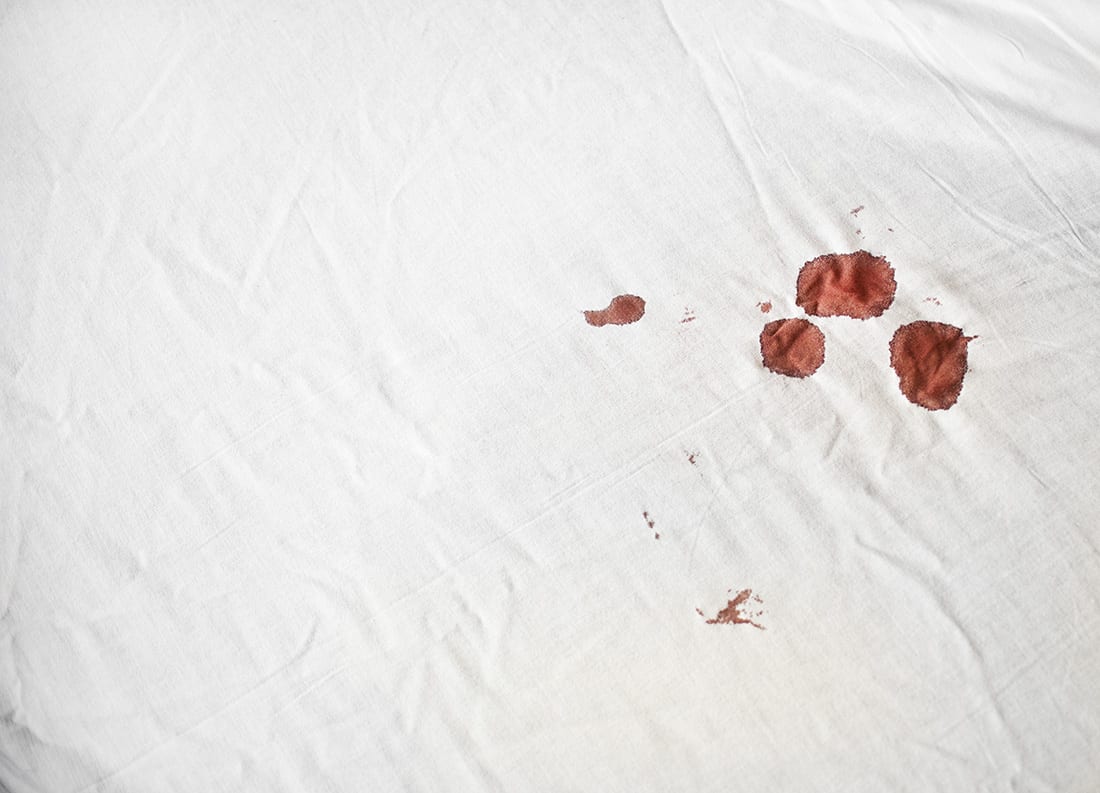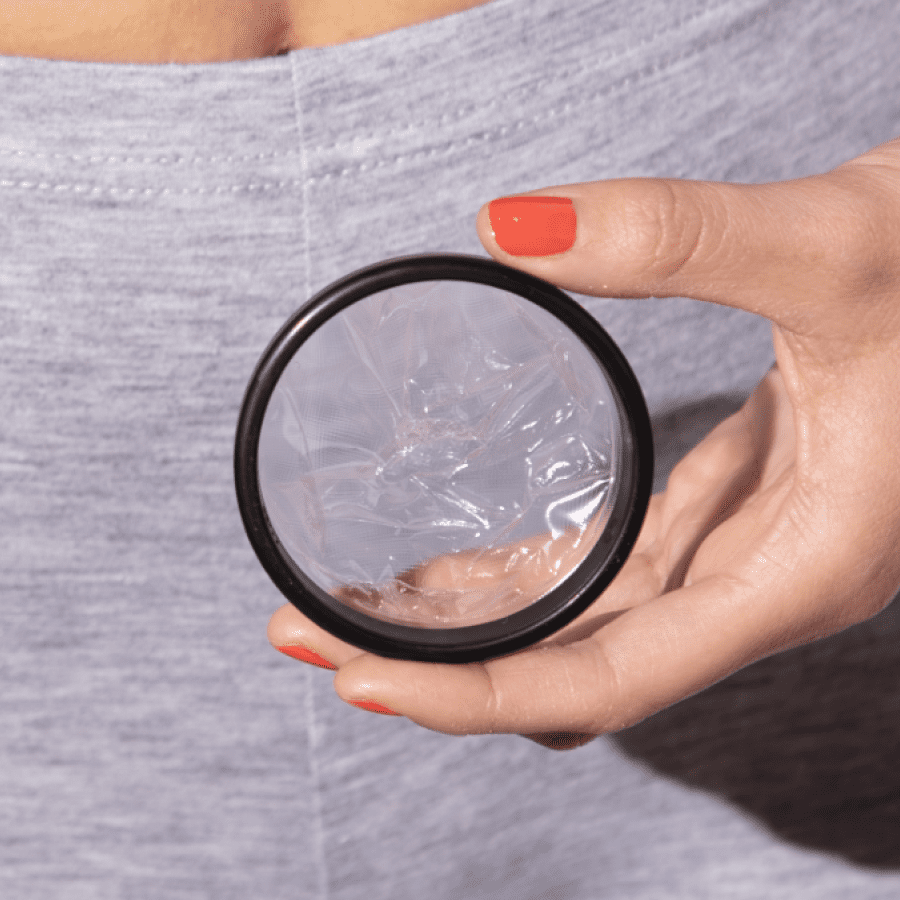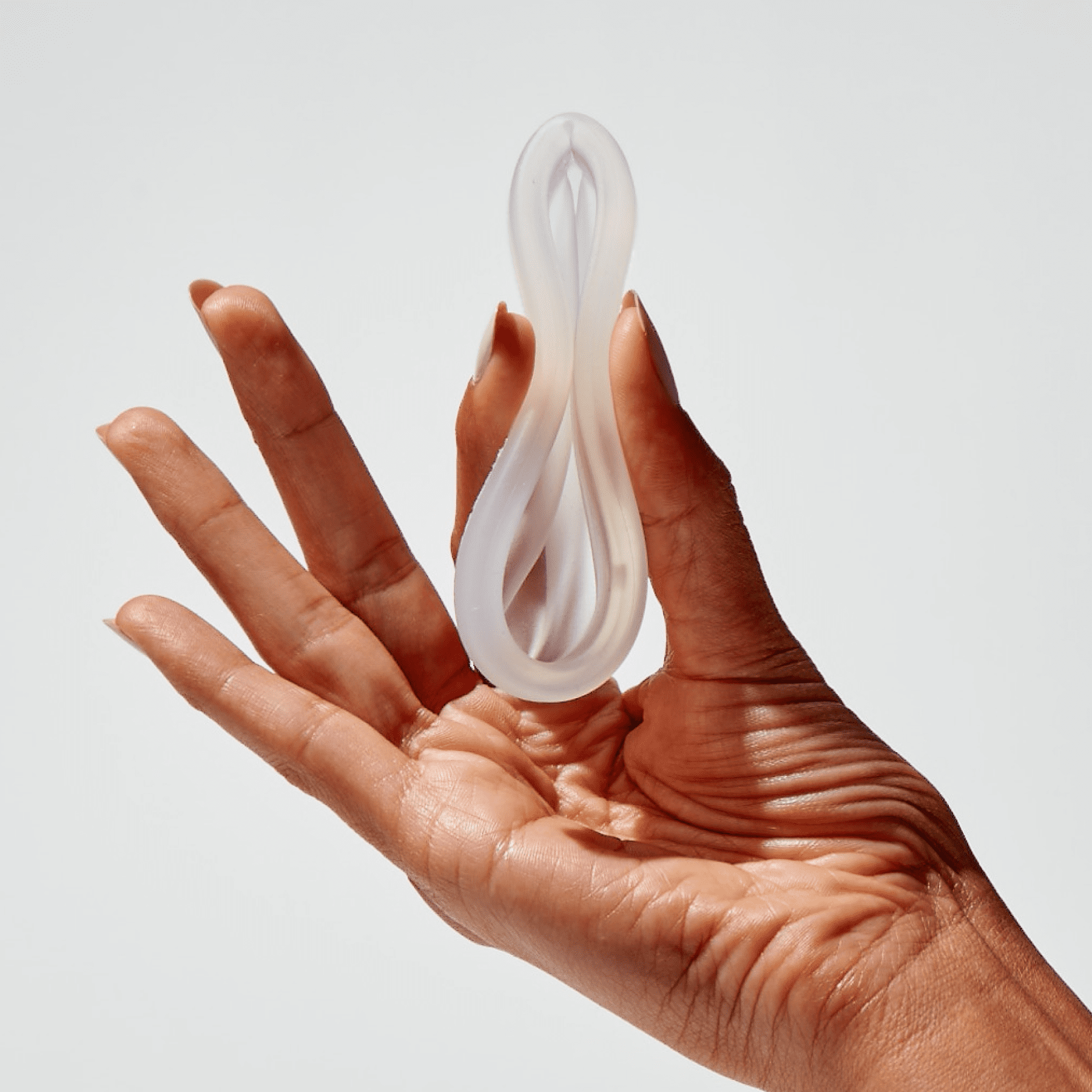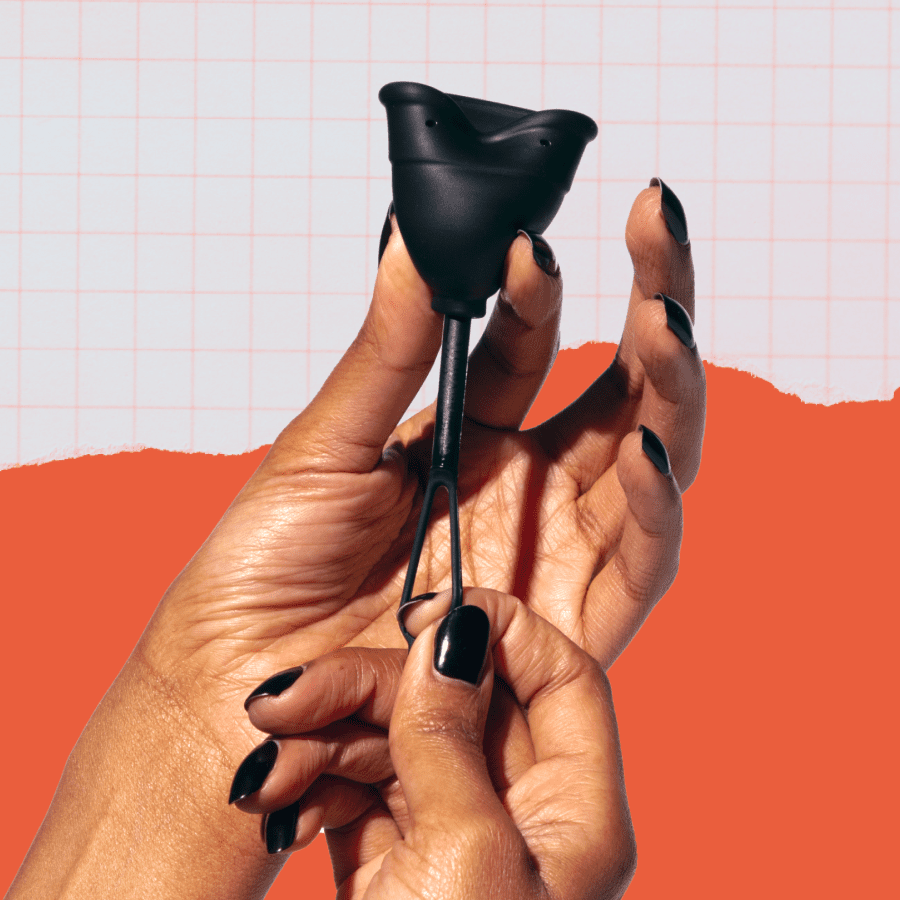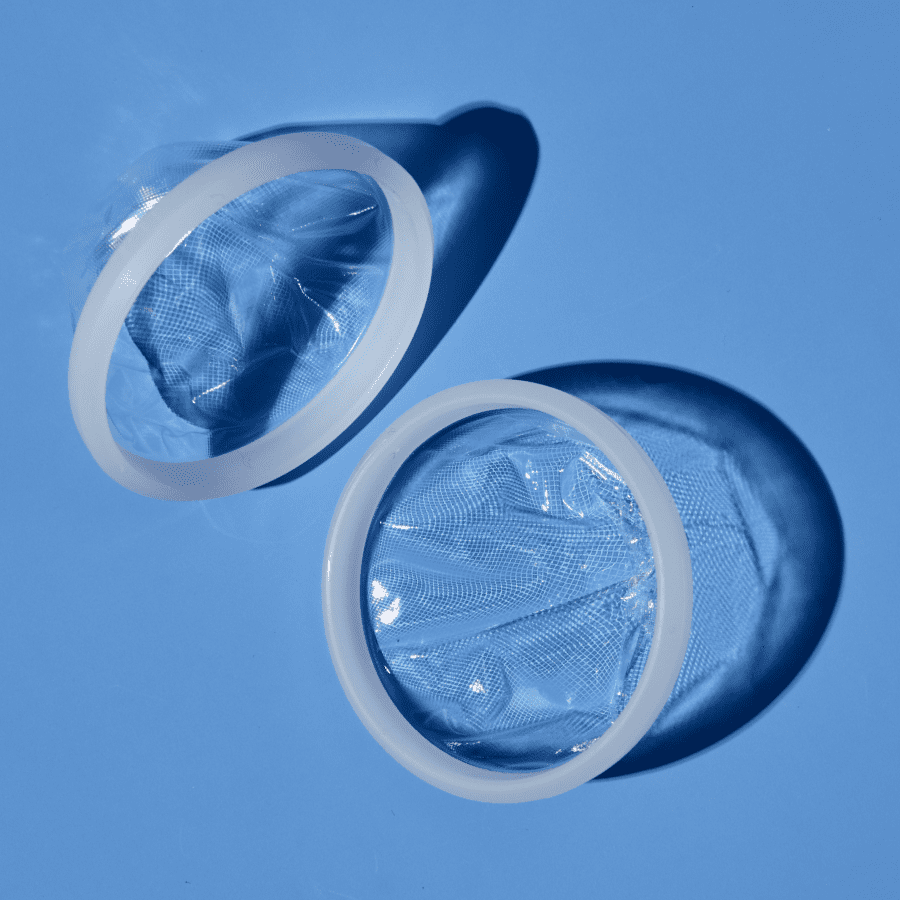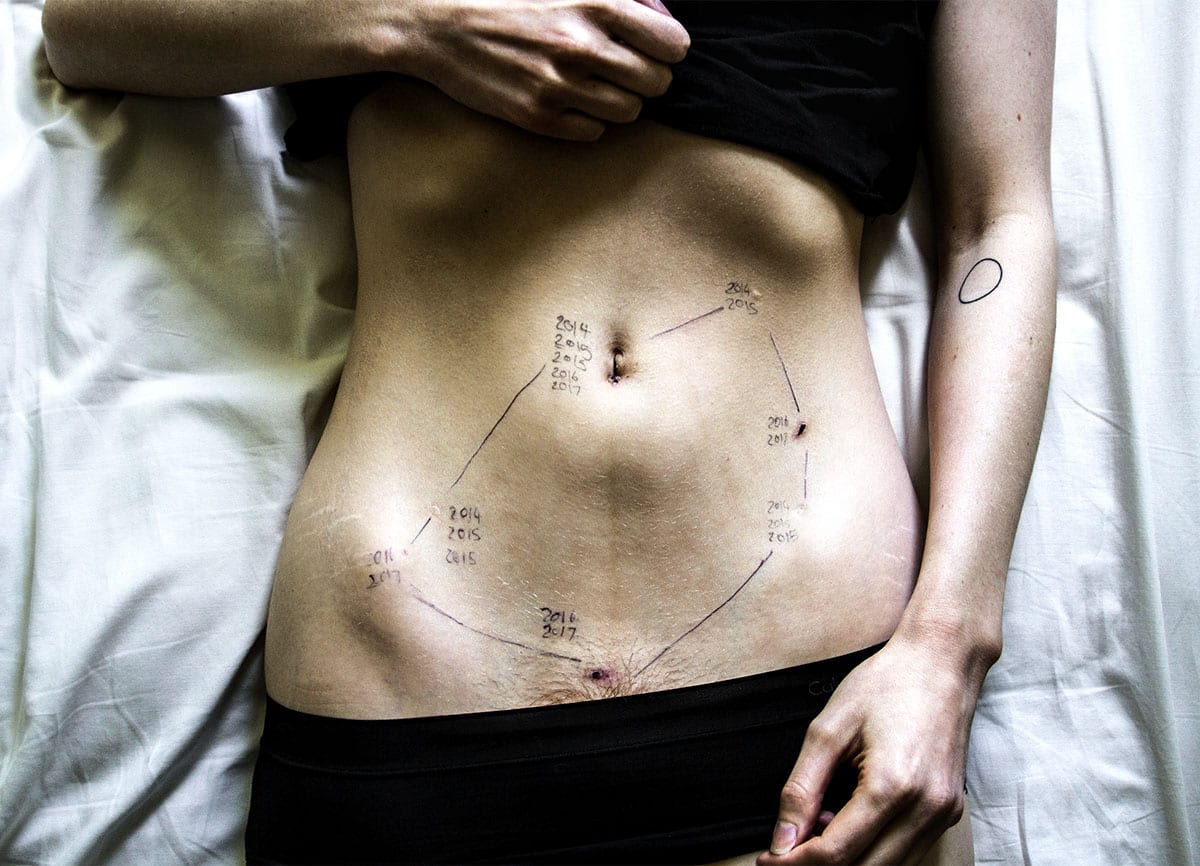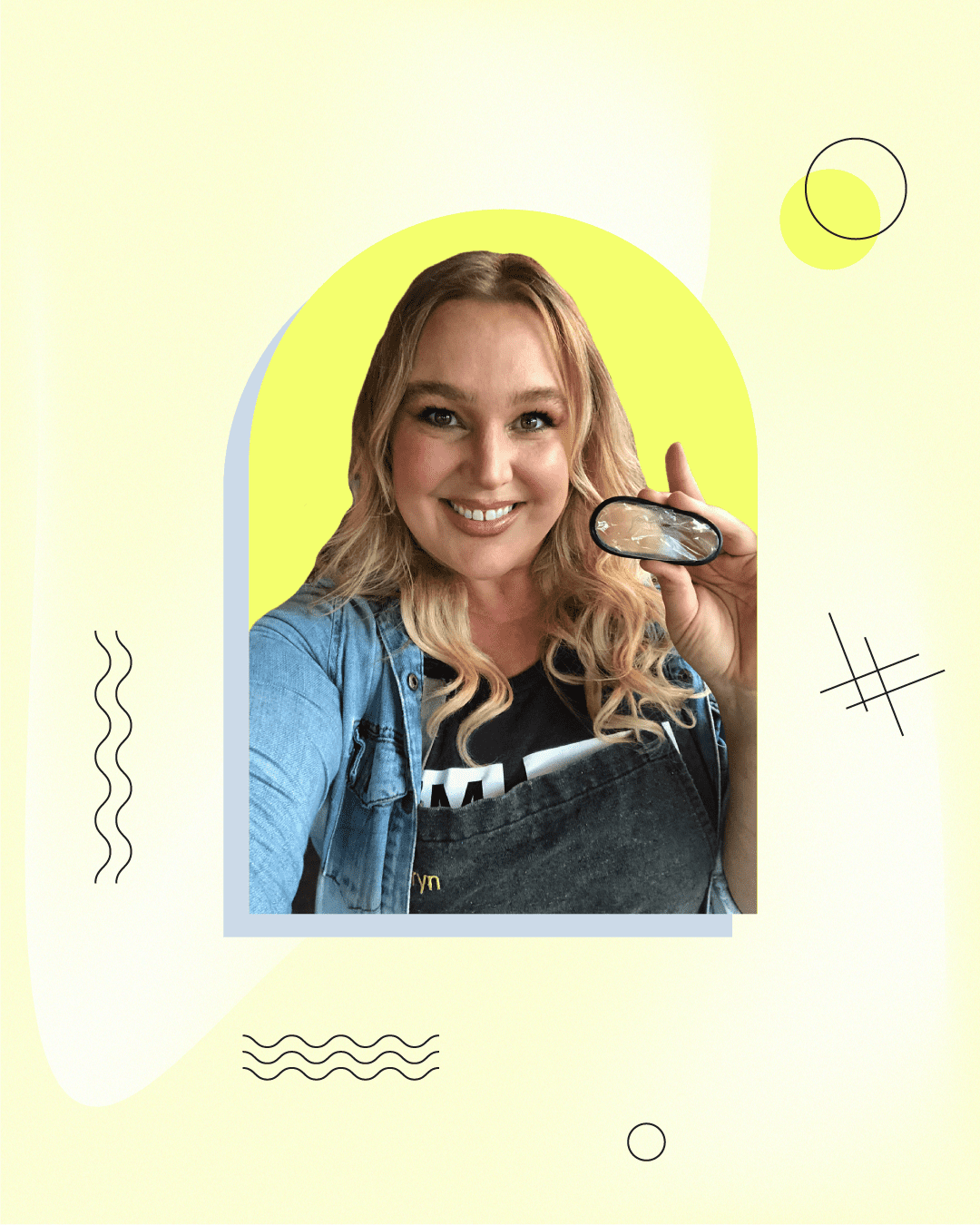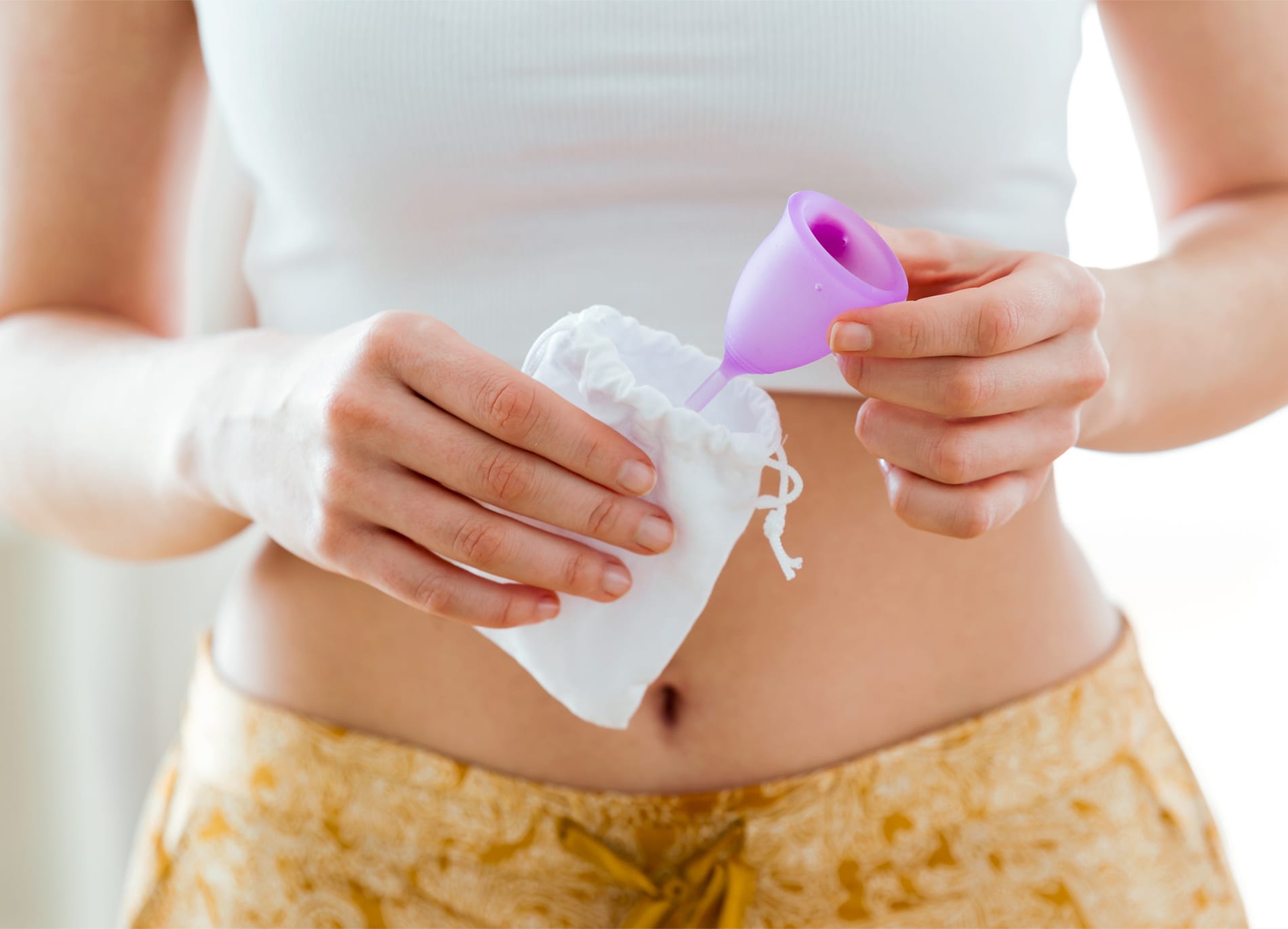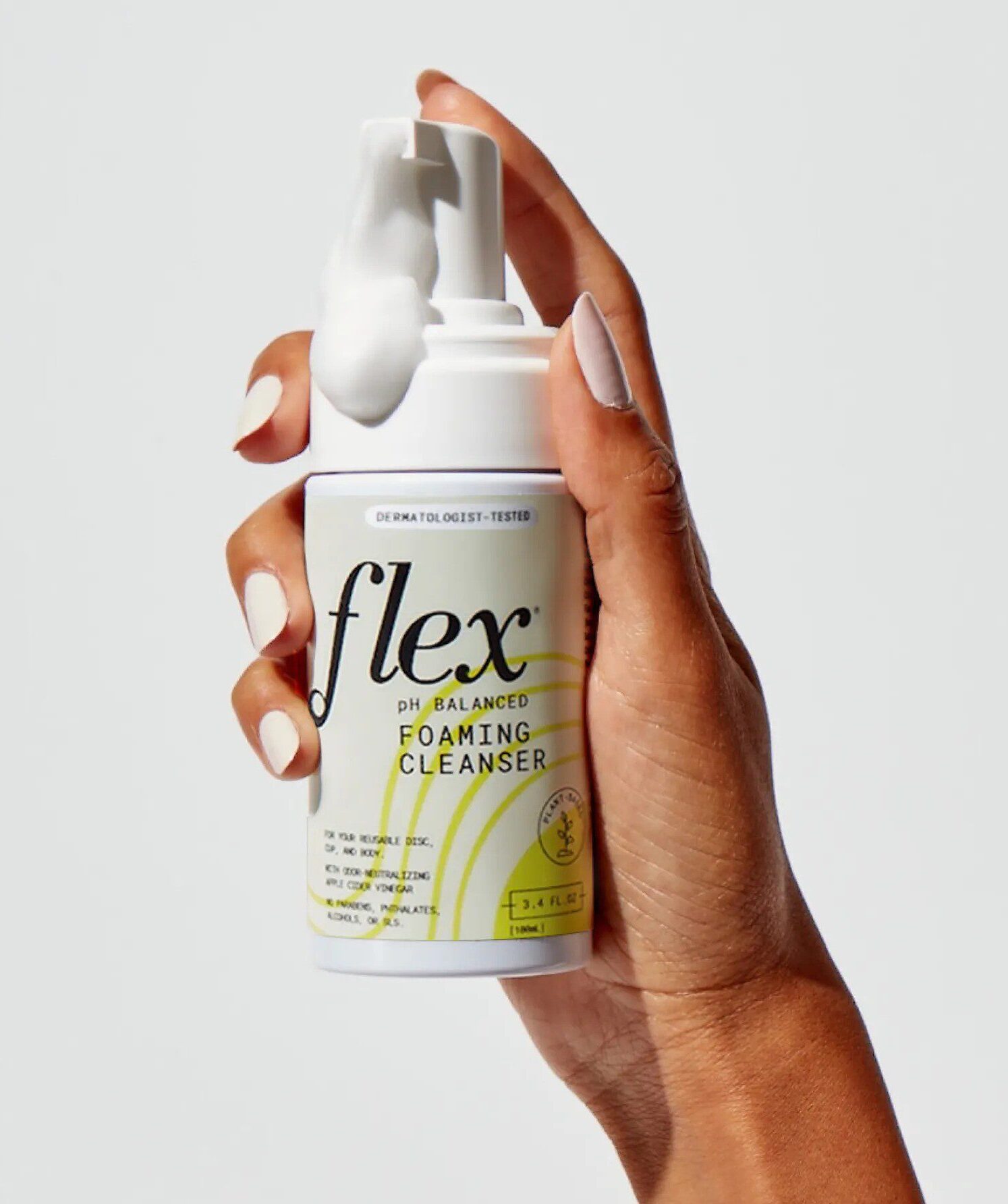Menstrual cup leaks – oh no!
You’ve finally made the decision to leave tampons and pads behind in favor of an eco-friendly, clean, comfortable alternative. Congratulations!
We’re guessing you’re here because using a menstrual cup have been a little messier than expected. Like, more-than-one-pair-of-stained-underwear messy. If that’s the case, don’t despair! You may just need a little practice with insertion – or it’s possible that you need a different size.
If you’re experiencing menstrual cup leakage with a Flex Cup™ or other brands, here’s what might be going on:
4 reasons your menstrual cup is leaking
1. Insertion issues
A misplaced cup is by far the most common reason for your period leaking. Quite simply, they take some getting used to. For women accustomed to tampons, their insertion practice is usually relegated to a haphazard one-finger shove up the vaginal canal. Menstrual cup insertion, on the other hand, requires a bit more finesse and care, especially for beginners.
In many cases, improper insertion occurs when the menstrual cup isn’t landing in the correct spot. This confusion can be alleviated with a simple anatomy lesson.
The vaginal canal links the uterus to the vaginal opening. The cervix is essentially a barrier between the uterus and vagina. During your menstruation, blood flows through the cervix and into the vaginal canal. Your cervix is what ensures that your period product of choice won’t get lost.
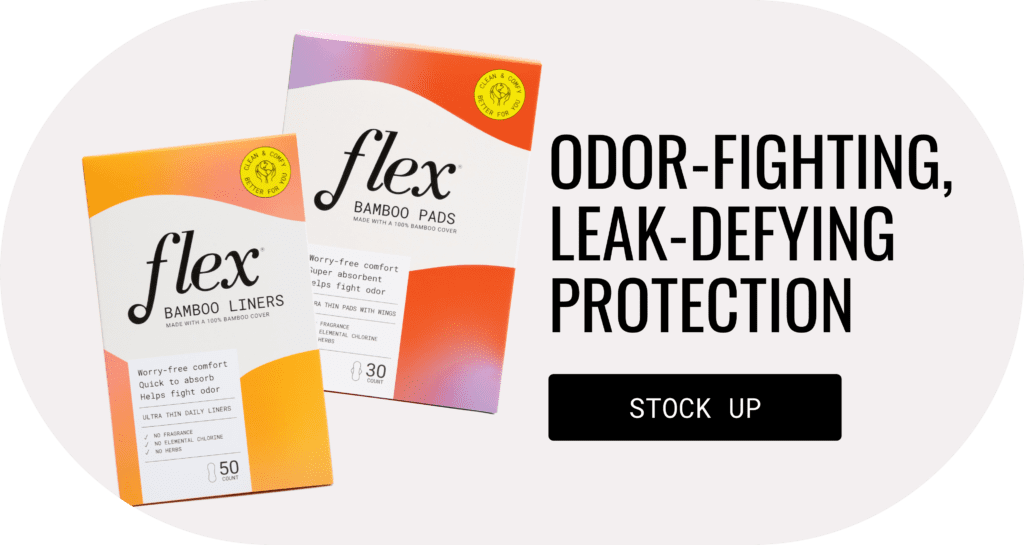
In an ideal placement scenario, your menstrual cup sits at least mid-way up the vaginal canal. This is just below the cervix, so that it can collect menstrual blood, leak-free.
In order to get the placement just right, relax your pelvic floor muscles before sliding your cup into your vagina. Once inside, try to push it back towards your tailbone rather than straight up like you would with a tampon. If your cup is too low in your vaginal canal, it won’t be as comfortable and will more likely leak.
One of the simplest ways to prevent leakage and improve your experience is to simply get to know your body. Try doing some research on female reproductive anatomy, look at diagrams and pictures, watch YouTube videos. Anything that can help you visualize how your menstrual cup sits in the body, and by extension, why it’s leaking.
2. Your cup isn’t “popping” open
The “pop” is a descriptor for when a period cup finds that sweet spot beneath the cervix and flowers open. Visually, this process makes sense. Fold the cup small enough to fit inside your vaginal walls, then let go and wait for the pop. Once it pops, you’ll have a complete seal with no gaps between the rim and your vaginal walls.
There are numerous ways to fold and insert menstrual cups, and they’re all perfectly valid. However, keep in mind that everyone’s vaginal muscle tone is unique. Certain folds may not work as well for you to create a perfect seal, and this may lead to a leaking menstrual cup.

The only solution here is to just keep practicing andtry a different fold. Here’s a quick breakdown of the pros and cons of three of the more popular folding methods:
The C fold:
This is one of the simplest options. All it involves is folding your cup in half, forming the titular C shape (kind of like a taco). Many menstruators find that the C fold allows the cup to pop open more easily than other folds. The C fold is fairly wide when it comes to space, inserting it into the vagina can be a bit trickier.
The punch-down (or tulip) fold:
This involves pushing down one side of the rim. Hold one side down, then squeeze the sides together. Unlike the C fold, this option makes for a very narrow end-product, so insertion may feel much easier. The potential downside is that it can be harder to pop fully open, due to how compact the folding process is.
The 7 fold:
Insertion with the 7 Fold is similar to the Tulip/Punch-Down. Some users find that with this fold, the cup opens up more easily inside their body. Fold it in half so that the lips touch. Then pull down the right side, forming a “7” shape.
Still not working?
So, you’ve tried all options and read our troubleshooting guide but still haven’t found your perfect fold. If that’s the case, you may need to do some manual adjusting.
One simple way to achieve that desired pop is to rotate the menstrual cup and wiggle it from left and right. While tugging the base, do it gently and lightly downward. With proper insertion, you should be able to feel pressure from the suction when you try to pull it downward.
You can also run your finger around the outer side of the rim. If you feel a slight crease, it’s likely preventing the formation of a vacuum. To fix it, you can put some pressure on your vaginal walls to help it open up or try reinserting it.
3. You have a low cervix
Everyone’s vaginal anatomy is unique. If the many tips and tricks you’ve tried aren’t working, the reason could be the natural position of your cervix.
Most instructions are written for women with high cervixes. If your cervix lies low, you could encounter more of a learning curve (leading to unnecessary leaking). Cervix height and swelling can also change during the different stages of your menstrual cycle. Because of this, what works one day may not work the next.
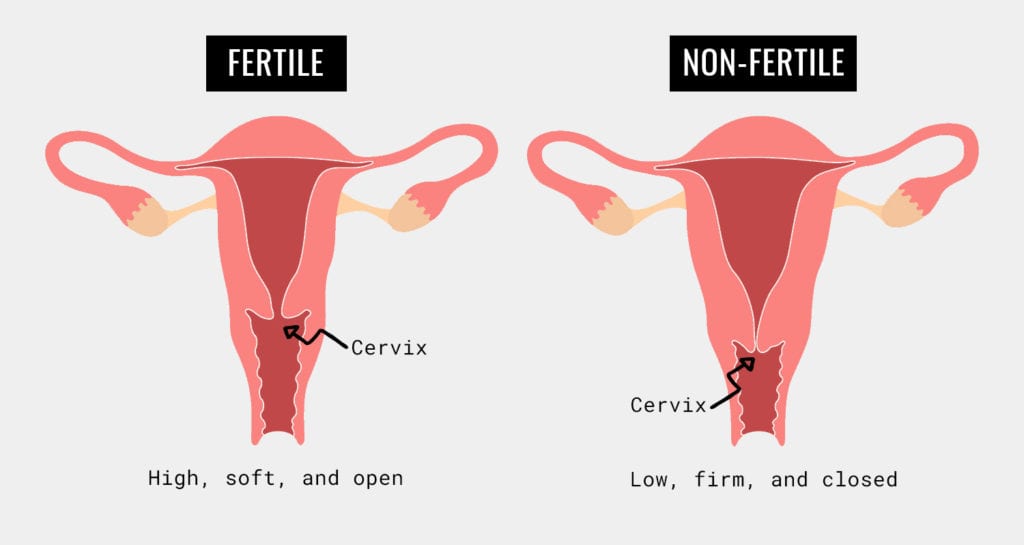
If you’ve never located your cervix before, check out this guide, courtesy of our resident Flexperts.
If you have a low cervix, your menstrual cup may be too long. This could push the rim at the top of the cup to one side, preventing it from creating a seal beneath the cervix. Alternatively, the cervix may end up sitting inside the cup.
Suspect your cervix is sitting inside? Run your finger around the cup’s rim to see if you’ve missed the cervix. If that’s the case, pinch the base of the cup and pull it down until it’s below the cervix. Then, angle it towards your cervix and do another finger check to ensure that everything is sitting properly.
What Else Does This Mean?
A low cervix also means you may need to empty your menstrual cup more frequently or consider a larger size. This is because your cervix could be dipping into the cup, taking away some of the space for blood to collect.
4. Your cup is the wrong size
For the most part, standard-sized menstrual cups provide ample room to collect all your menstrual fluid within a 12-hour period. This is the maximum amount of time you can safely wear your cup before emptying and cleaning it. For some women, however, a heavy flow means that a “standard” size isn’t quite enough space for 12-hour wear.
If you know you have a heavy flow and you’re experiencing frequent leaks, there are two possible solutions.
First, try emptying your menstrual cup more frequently during your heavy days. This adjustment means that you may need to occasionally rinse it in a public restroom. If this sounds unappealing, consider buying a higher-capacity size.

The average menstrual cup holds around 20 mL of blood. Larger sizes can hold anything from 30 to 42 mL – much greater than a tampon or pad’s capacity. If you’re trying to decide between the two Flex Cup sizes, here are the capacity stats:
- The Size 01 holds 22mL and is 43mm in diameter
- The Size 02 holds 30 mL and is 46mm in diameter
For most individuals, either size will work. It really comes down to choosingthe perfect fit for your comfort and capacity needs. If you’re a first-time user or have a light to medium flow, we recommend the Size 01.
The Size 01 should work out for heavy flows, as well. You just may find that the cup is overflowing, and you have to empty and reinsert it a bit more frequently. If you have heavy flow or have had multiple vaginal births, Size 02 might be the right size for you.
How do you know if your menstrual cup is the right size to prevent leakage?
Ensure your menstrual cup forms a light seal around your cervix. If it’s too small, it may not create a proper seal; if it’s too large, it might not unfold fully. Expel and reinsert the cup if leaking persists. The right size should be comfortable and leak-free.

Wait – I’m still leaking!
You’ve poked and prodded, wiggled and tugged. You tried every option on the market but leaks are still resulting in a messy period. It may be that cups aren’t the best choice for your unique anatomy.
So, you like the idea of an eco-friendly product that’s light on leaks but heavy on comfort. However, menstrual cups continue to let you down, and you don’t want to return to pads or tampons.
Enter the menstrual disc.
On the other hand, menstrual discs like the Flex Disc™ sit in the vaginal fornix. The vaginal fornix is the widest part of the vaginal canal that is even closer to the cervix.
Menstrual cups use suction to stay in place, whereas discs work with your natural anatomy. Menstrual discs are held in place by your pubic bone. With most discs, there’s no need to shop around for the proper size (Flex Disc is one size fits all).
The bottom line on menstrual cup leaks
Everyone’s body is different, so it takes some trial and error to learn which product is best for you. Despite what your high school health class may have taught you, tampons and pads aren’t the only options on the market.
If you’re looking for an eco-friendly, user-friendly option with little to no leaking, start with the Flex Cup. Ready to try something different? Test out the Disc, too (or get both in the Flex Discovery Kit).
Having trouble with your Flex period products and none of the solutions in this guide are helping? Reach out to our team via email at help@flexfits.com.

This article is informational only. It is not offered as medical advice, nor does it substitute for a consultation with your physician. If you have any gynecological/medical concerns or conditions, please consult your physician.
© 2024 The Flex Company. All Rights Reserved.
